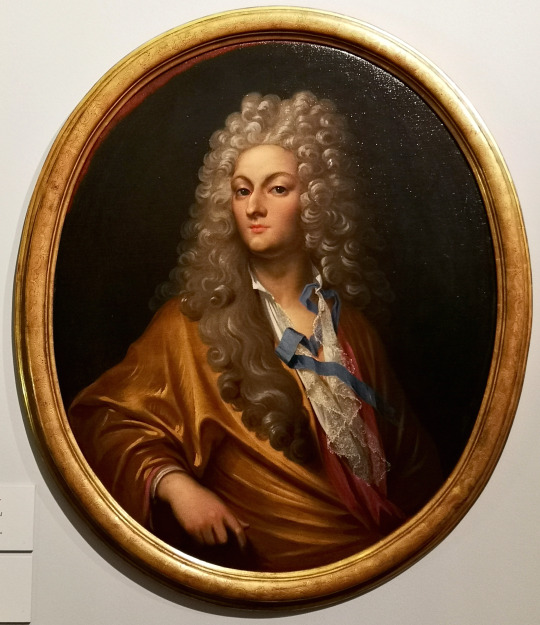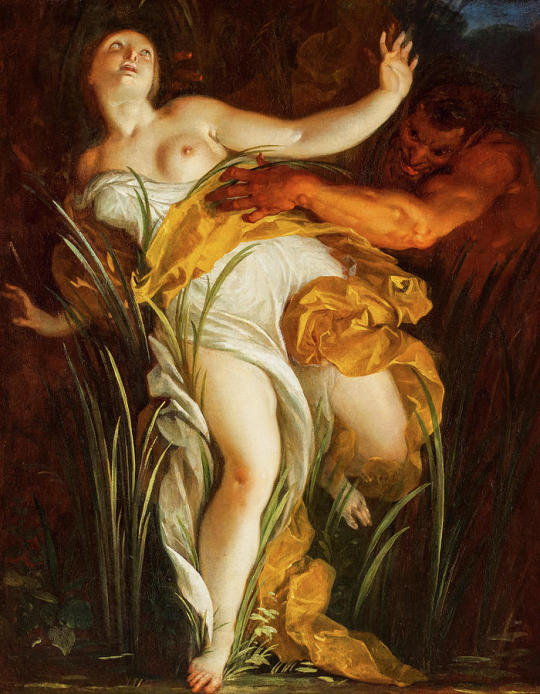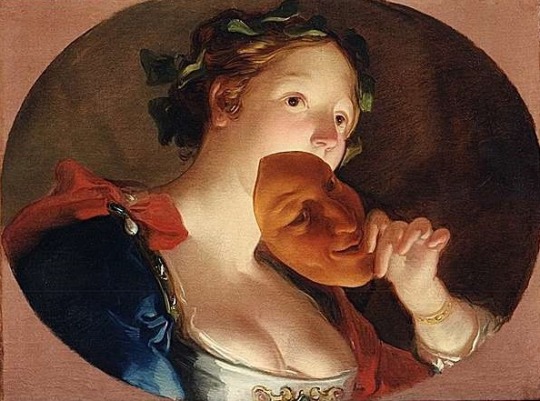#louis dorigny
Explore tagged Tumblr posts
Text

Louis Dorigny, The angels musicians in glory, I Gesuiti, Venice
4 notes
·
View notes
Text

Louis Dorigny (attributed to), Self-Portrait, between 1712 and 1730, oil on canvas, 92 x 77 cm, Museo Civico di Palazzo Chiericati, Vicenza
#louis dorigny#ludovico dorigny#portrait#male portrait#self portrait#18th century#early 18th century#baroque#baroque fashion#18th century fashion#my own photos
2 notes
·
View notes
Text

Pan and Syrinx
Artist: Louis Dorigny (French, 1654-1742)
Date: Unknown
Medium: Oil on canvas
Collection: Private collection
Description
The work before us is a depiction of a mythological episode, the story of Pan and Syrinx, as told by Ovid (Metamorphoses, I: 691). The Latin poet situates the story in Arcadia, where the satyr-god sets out to pursue the nymph Syrinx, who is accustomed to "elude the satyrs chasing her, and the other sylvan deities". She flees from Pan "who thought he had her in his grasp", and as she finally reaches the river Ladon, "she begged her sisters of the water to transform her", as announced by the reeds in the foreground, symbolizing her fate and her ultimate appearance. The dynamic gesture of Pan, seizing Syrinx with one hand and parting the reeds with the other, and the close-up, di sotto in su viewing point, emphatically set the picture within a spectacular Baroque aesthetic that is typical of the artist's style. The contrast between the milky flesh of Syrinx and the tanned tonality of the satyr, whose body melds into the background from which he emerges, lends a marvellous rhythm to this pair of figures.
#mythological painting#pan#syrinx#ovid 's metamorphoses#poet ovid#baroque style#satyr#reeds#louis dorigne#french painter#french art#artwork#european art#oil on canvas#painting#fine art
39 notes
·
View notes
Text

Anonymous French, 18th Century (Former attribution Louis Dorigny, 1654-1742)
Suzanne et les vieillards, n/d, oil on canvas, 68x60 cm
Musée des Beaux-Arts Bordeaux Inv. Bx E 137
10 notes
·
View notes
Text

Personification of Hope by Dorigny Louis
Look at her, she has been through some shit

355 notes
·
View notes
Photo


Allegory of Comedy by Louis Dorigny (French, 1654--1742)
522 notes
·
View notes
Photo

Apollo and Daphne, by Louis Dorigny, 18th Century, fresco. Italy, Veneto, Padua, Palace Cavalli.
1 note
·
View note
Photo

Louis Dorigny (1654–1742)
“Abraham et Agar”
26 notes
·
View notes
Photo

Villa Rotonda By Andrea Palladio with modifications by Vicenzo Scamozzi,
Trompe-l'oeil with mythological figures, by Louis Dorigny (1654-1742),
circular central hall Villa Almerico Capra, also known as La Rotonda
#art#design#interior design#Architecture#villa#villa rotonda#Andrea Palladio#vicenzo scamozzi#trompe l'oeil#louis dorigny#unesco world heritage site#hall#circular#almerico capra#luxury homes#luxury
204 notes
·
View notes
Photo
Louis Dorigny, né le 14 juin 1654 à Paris et mort le 29 novembre 1742 à Vérone en Italie, est un peintre et graveur français. Wikipédia

Pan Uncovering the Nakedness of a Sleeping Nymph ~ Palazzo Orsetti Dolfin Giacomelli, Treviso
Luis Dorigny
604 notes
·
View notes
Photo

🏺Pictorial monumentality inside the walls of Palladio - 📌The Northern Passag leading to the famous Rotonda in the Villa Almérico Capra in Vicenza. Conceived by Andrea Palladio in 1567 it was finished by a couple of different artists in 1607, and mainly by Andrea Scamozzi. The walls of the passages and the central space were painted by the painter Louis Dorigny and the magnificent overdoors in the baroque era are attributed to artists of Valsolda. (en Villa la Rotonda) https://www.instagram.com/p/CcOOpJuIksS/?igshid=NGJjMDIxMWI=
36 notes
·
View notes
Photo

Christ on the Cross with Mary Magdalene, Follower of Simon Vouet, 1640, Art Institute of Chicago: European Painting and Sculpture
This small painting showing the grief-stricken Saint Mary Magdalene alone at the foot of the cross was probably intended as a private devotional work. The same expressive figure of Magdalene appears in more complex treatments of the Crucifixion and the Lamentation by followers of Simon Vouet. Having worked in Rome before returning to Paris as first painter to Louis XIII in 1627, Vouet was a gifted teacher, attracting many students and collaborators to his Paris workshop. Vouet's followers Charles Poërson, Michel Dorigny, and François Perrier have all suggested as the author of this painting. Though the artist remains unidentified, his debt to Vouet's weighty figure types, active draper, and rich colors is clear. Restricted gift of the Harold T. Martin Trust Size: 29 5/16 × 21 7/8 in. (74.4 × 55.6 cm) Medium: Oil on canvas
https://www.artic.edu/artworks/53061/
47 notes
·
View notes
Photo

Louis Dorigny, 1654-1742
Pan uncovering the nakedness of a sleeping Nymph, ca.1710, fresco
Palazzo Orsetti Dolfin Giacomelli, Treviso
Fresco decoration appears on the ceiling of the ballroom, in three compartments with ornate frames that are elegantly interwoven with luxuriant, gilded oak branches. The elongated central compartment contains the Bacchanal, a rustic and lively scene. In the compartment toward the window overlooking the street, Pan appears with the Hours, while in the compartment on the other side, toward the garden, Pan Uncovering the Nakedness of a Sleeping Nymph is represented. (wga.hu)
36 notes
·
View notes
Photo

Louis DORIGNY, Bacchanal c. 1710 Fresco Palazzo Orsetti Dolfin Giacomelli, Treviso
1 note
·
View note
Photo

Louis Dorigny ~ Pan uncovering the nakedness of a sleeping Nymph, ca.1710
19 notes
·
View notes
